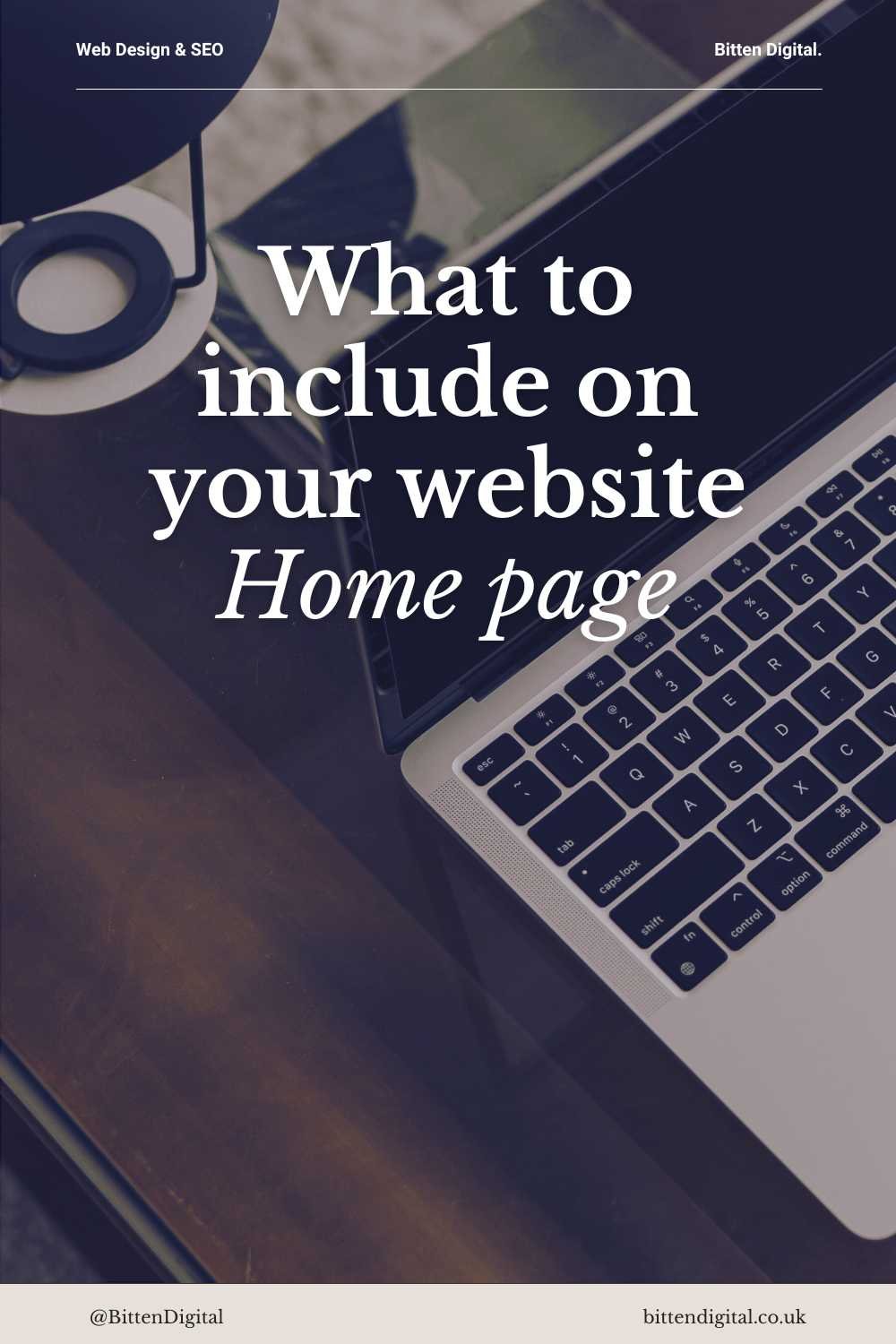What to Include on Your Website Home Page
Designing a website for your business can feel like a daunting task, especially for owners of growing businesses where every decision counts. Your home page is often the first impression potential customers will have of your business, so it's essential you get it right. In this blog post, we’ll walk you through key elements to include on your home page to maximise customer engagement and sales, while maintaining a strong brand message.
1 - Branding
With all of the suggestions below, I would always ensure your written content, along with any visuals, are your own and that they tie in with your branding. It’s often obvious when stock imagery has been used, and consumers these days want to feel connected to brands - that only happens by showing your brand personality and ethics. There are a number of wonderful photographers, videographers, graphic designers and copywriters out there who will help you craft a brand that’s unforgettable.
2 - Clear and Concise Value Proposition
The top of your home page should immediately communicate what your business does and who you serve. Make sure it's clear, concise, and prominently displayed. Avoid jargon and keep it simple. For example, if you run a bakery, a value proposition might be: "Delicious, Freshly Baked Goods Delivered to Your Doorstep."
3 - Prominent Call to Action (CTA)
Your CTA is critical for guiding visitors towards the next step you want them to take, whether that's making a purchase, signing up for a newsletter, or contacting you for more information. Place your primary CTA above the fold (the part of the website that is visible without scrolling) and make it stand out with a contrasting colour and compelling text. For instance, "Shop Now," "Get a Quote," or "Sign Up Today."
4 - Key Services or Products
Showcase your key services or products on the home page. Use high-quality images and brief descriptions to highlight what you offer. This not only informs visitors about your offerings but also entices them to explore further. For example, if you're a boutique clothing store, feature your latest collection with a link to shop the full range.
5 - About Me Section
People like to know who they're doing business with. Include a brief About Me or About Us section on your home page that gives a personal touch. Share a bit about your story, mission, and values. This can help build trust and connection with your audience. Link this section to a more detailed About page where visitors can learn more.
6 - Social Proof
Social proof is a powerful tool for building credibility and trust. Include testimonials from happy customers, reviews, or any awards and recognitions your business has received. Real quotes and photos of satisfied clients can make a significant impact. If possible, link these testimonials to case studies or detailed reviews for added authenticity.
7 - Newsletter Signup or Lead Magnet
Your home page is the perfect place to encourage users to sign up to your mailing list, either by offering them a freebie or discount, or by telling them the benefits they will gain from subscribing.
8 - Visual Appeal
Your home page should be visually appealing and reflect your brand's identity. Use a cohesive colour scheme, professional images, and readable fonts. Ensure your website is mobile-friendly since many users will access your site from their smartphones. A clean, uncluttered design helps visitors focus on your content and CTAs.
9 - Contact Information
Make it easy for visitors to get in touch with you. Include your contact information, such as phone number, email address, and physical address if applicable, in the footer of your home page. I’ll talk more about footers another day!
10 - Links to Social Media
Encourage visitors to follow you on social media for updates and promotions. Include social media icons linked to your profiles on Instagram, TikTok, Facebook, and any other platforms you use. This can help build a community around your brand and keep customers engaged.
11 - Latest News or Blog Posts
If you have a blog, feature your latest posts on the home page. This not only keeps your content fresh but also showcases your expertise and keeps visitors coming back for more. Regularly updated content is also beneficial for SEO, helping your website rank higher in search engine results.
Wait, what about the Header and Footer?
While your header and footer are super important, I’ll cover those another day, as they deserve their own blog post. However, I will say that your aim should be to keep your header navigation simple and succinct - think of it as a way to guide your visitors around your site, and not just list out all of your web pages
Conclusion
A well-designed home page is crucial for making a strong first impression and guiding visitors towards becoming customers. By including these key elements—clear value proposition, prominent CTA, simple navigation, key services, about me section, social proof, visual appeal, contact information, social media links, and latest news—you can create a home page that not only looks great but also drives business growth.
For more tips on website design and small business growth, follow along for more. We share regular updates and inspiration to help you succeed in your business journey.

